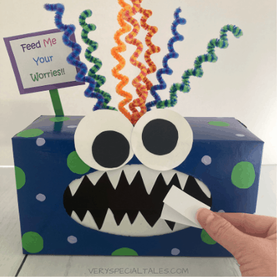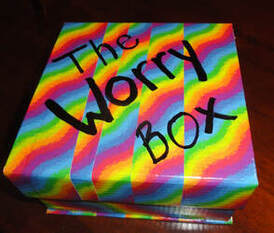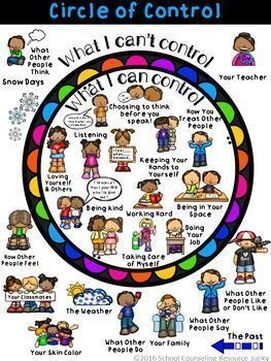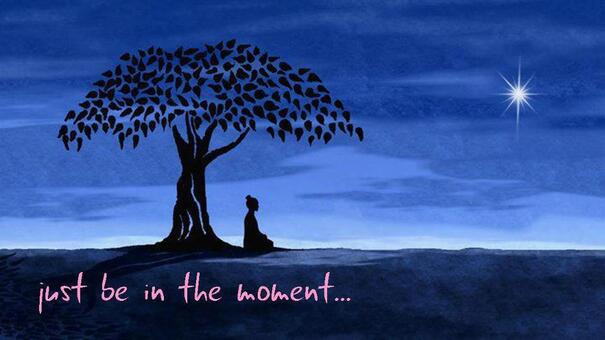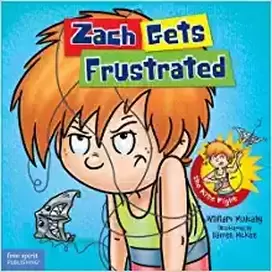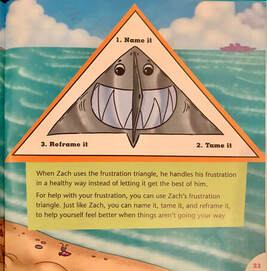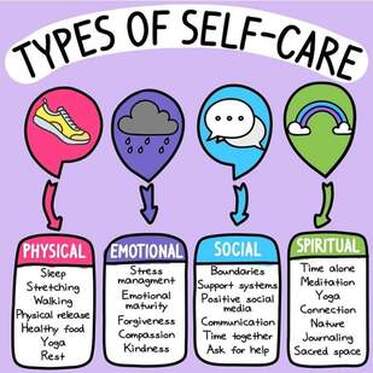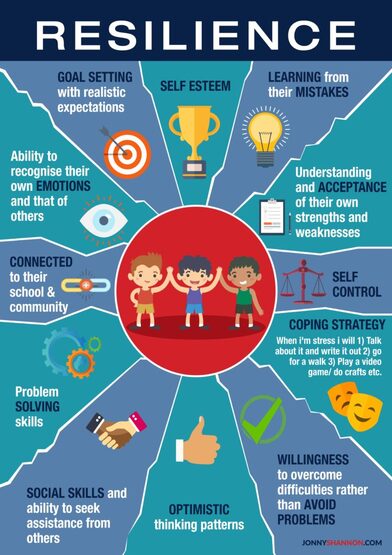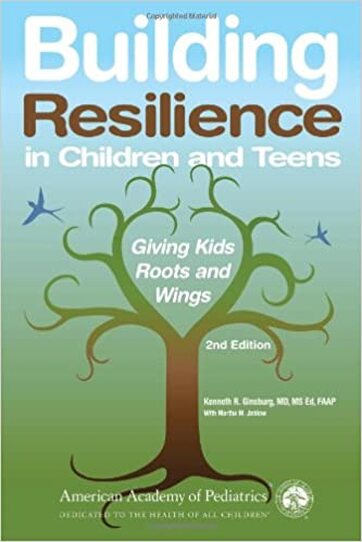Managing Anxiety
Worry. Anxiety. Stress. We all have different triggers. What causes anxiety in one person can actually calm another person. For example, travelers versus homebodies or long 'to-do' lists versus boredom. This pandemic seems to have set off all the triggers! It is a universal pandemic that targets everyone in many different ways. When an event triggers anxiety, our Emotional Brain (amygdala) overpowers our Thinking Brain (frontal lobe). This makes it difficult to calm down, but there are strategies we can use to bring our Thinking Brain back into action. Learn more by watching the short video below.
|
|
|
|
Mindfulness
Mindfulness is focusing on what is happening in the present - RIGHT NOW. I’ve heard that depression comes from focusing on the past and anxiety comes from focusing on the future. I teach students, “The past is history, the future is a mystery, so focus on the present.” Activities that help us focus on the present are called grounding activities. I teach students that when they have negative thoughts, they need to tell those thoughts “You’re grounded!” Those thoughts must stay away because they were grounded to a quiet room in their brain!
The Frustration Triangle
|
Life is hard. Frustration is what we feel when things don't go the way we want them to. During this coronavirus pandemic, many of us feel frustrated! There is a process we can use to help our children - and help ourselves - feel better and control our frustration. It is called the Frustration Triangle and is taught in one of my favorite children's books: Zach Gets Frustrated by William Mulcahy. You can listen to the book by watching the YouTube video on the right.
Name It. Say why you are frustrated. Tame It. Use chills skills to help your mind and body relax. Reframe It. Look at the problem in a new way. You can use the attached worksheets to learn new chill skills and complete your own Frustration Triangle! |
|
Self Care
|
Self-care is everything we do for our physical, mental, and emotional well-being. We cannot give to others what we don't have ourselves. We are more resilient and able to handle the life's stress when we are feeling our best both physically and emotionally. We can be the best version of ourselves for the people around us. By modeling healthy self-care practices for our children, we are teaching them to value their minds and their bodies.
It's important to teach kids to take a SELFIE. This isn't a selfie we take on our phone. This is happiness selfie! How to Take a Happiness SELFIE: S - Sleep E - Exercise L - Light (sunlight) F - Fun I - Interact E - Eat Well I also attached a self-care handout that your children can complete! It lists a variety of coping skills they can select to evaluate how well they are doing at self-care, as well as set self-care goals. |
|
Resilience
|
Resilience is defined as “The capacity to recover quickly from difficulties; toughness” (source). Undoubtedly our students will face difficulties, usually on a daily basis. “Toughness” does not mean our students don’t feel and express a wide range of emotions, including sadness, frustration, anger, etc. It does, however, mean that after allowing themselves to feel and express emotions they are able to ultimately overcome and move on from challenges. As parents and caregivers we sometimes want to rescue our children from struggles and pain. The problem with this train of thought is that as our kids get older and face even more difficult challenges they will not have the skills needed to overcome difficulties on their own. Teaching and building resilience skills NOW is going to lead to our students becoming more confident and capable adults in the future! How can I help my child(ren) increase their Resilience?
● Teach your children problem solving skills instead of solving problems for them. Start with small situations and gradually release responsibility. You could prompt them with, “Good question, how could you figure that out?” This nurtures their independence and helps them learn to tolerate uncertainty and brainstorm solutions. ● Use "The Power of Yet." If your student says, "I don't know how to do it," add the word "yet" to the sentence. "I don't know how to do it, yet!" ● Remind them that it is okay to make mistakes! Mistakes are proof that we are trying. It's healthy for your children to hear you admit your mistakes and even laugh at them sometimes too! ● “You can do hard things.” Sometimes simply reminding your children they can do something hard is an impactful practice. Say it often! |
|
I do a series of classroom guidance lessons on resilience based on the book Building Resilience in Children and Teens: Giving kids Roots and Wings, 2nd Edition, by Kenneth R. Ginsburg.
Dr. Ginsburg recognizes that kids commonly survive stress by either engaging in unhealthy behaviors or giving up completely and suggests that the solution is aimed at strengthening their resilience. Dr. Ginsburg introduces the seven "C's" of resilience needed to bounce back from challenges: competence, confidence, connection, character, contribution, coping, and control. My resilience lessons focus on how we can each strengthen our own seven "C's". |

